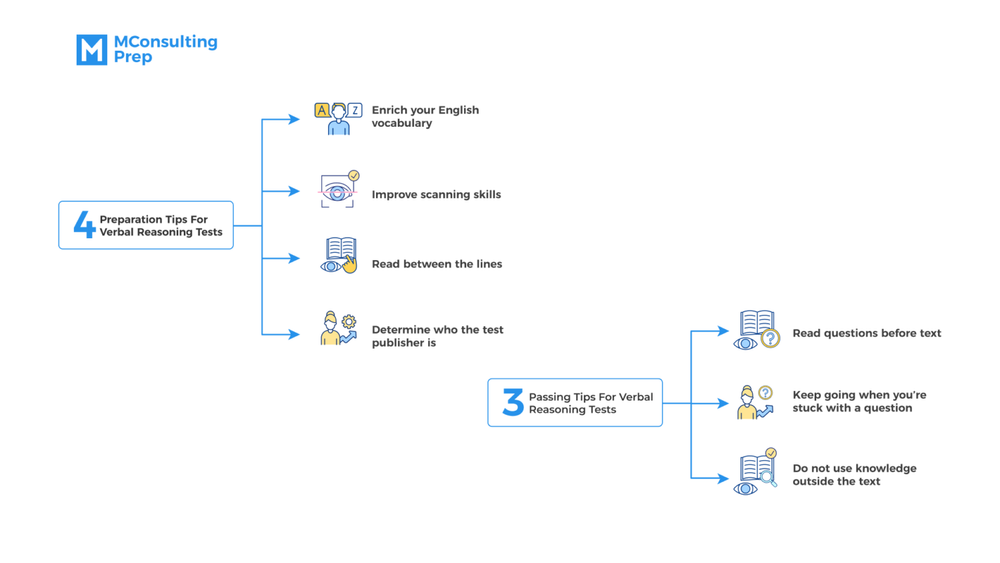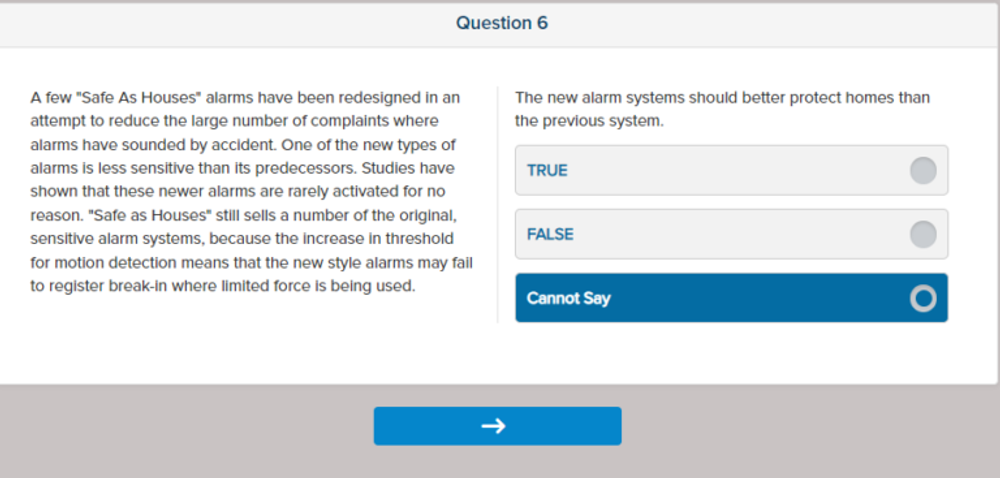Verbal reasoning tests, often used in the job application process for multiple roles, measure the ability to read and understand a text and apply that information to answer questions.
These tests are considered difficult enough to help employers find out the best in a giant talent database. In this article, we’ve compiled a list of useful tips and techniques that help you perform better and get a higher score in a verbal reasoning assessment.

Table of Contents
Preparation tips for verbal reasoning tests
As you know, verbal reasoning tests are not easy. Those who want to pass them would need the following preparation tips.
Firstly, make sure your vocabulary level is at least C1
Having C1- level vocabulary will prepare you to deal with the upcoming verbal reasoning tests because each verbal reasoning test from different test providers requires a different vocabulary level.
Texts in verbal reasoning tests vary from B1 to C1, sometimes C2, which cover a range of topics:
- 80% of the passages discuss general topics like space, education, psychology, environment, etc.
- 15% of the passages cover business-related topics like business, finance, etc.
- 5% of the passages relate to specialized knowledge of a certain field like how solar panels exactly work, the detailed procedure of sewage treatment, etc.
In typical reasoning tests, there are questions involving spelling, grammar, word swaps, analogies, sentence completion, reading comprehension, etc. All boils down to the point that your English language must be good. It doesn’t matter whether English your first or second language; you should invest far more time in building your vocabulary.
You can enrich your vocabulary effectively by practicing a range of questions with different English levels from our verbal reasoning tests.
Next, you need to get familiar with scanning while reading
Scanning is a really important technique because questions in verbal reasoning tests require you to locate specific information under extreme time constraints. The more you practice, the more quickly you can scan information, and the faster you can answer a question.
There is a scanning answer strategy you might consider:
- Read through the question
- Find the keyword in the question
- Scan the passage for the keywords to find the right answer
Let’s do an example together.

Source: SHL
Answer: C
Explanation:
In the statement “What are floating nets used for”, the keywords are “floating nets” and “used for”. The question asks about the purpose of floating nets.
Now scan the passage, and you will see “floating nets” appear in the sentence “Other areas have used floating nets to create safe zones for swimmers”. The answer will be C.
Then ensure you can read between the lines
In verbal reasoning questions, test takers need to read between the lines to understand meanings that are not clearly presented in words. You are required to make inferences based on the given information in the text. One important note is that do not use any prior knowledge to solve the questions. All the answers must have evidence from the given text only.
Here’s an example of when candidates need to read between the lines.

Source: SHL
Answer: Cannot Say
Explanation:
The statement compares the new alarm systems with the previous system. Let’s scan the text for any comparison like this.
The sentence, “One of the new types of alarms is less sensitive than its predecessors.” There appears a comparison between a new alarm type and its predecessors.
“Predecessors” = “the previous system”
As you can see, the comparison in the text only compares the sensitivity between a new alarm and its predecessors”, NOT MENTIONING anything related to “protect homes”. So the answer is Cannot Say.
One practice to improve the skill of reading between the lines is to paraphrase a statement in different versions. By rewriting a statement in different ways, you can not only understand what the statement is discussing but also can analyze the statement and apply the information in new situations. That’s what exactly verbal reasoning questions will test you.
Let’s practice together with this simple example:
The statement: “Studies indicate that butterflies are dying from a range of factors.”
Paraphrased version 1:
“Scientists find out that the future of butterflies is in danger because of various causes.”
Paraphrased version 2:
“Experts maintain that there are multiple reasons why butterflies are going extinct.”
Paraphrased version 3:
“The survival of butterflies is threatened by different factors, according to a study.”
Determine who the test provider is
It’s important to know who the test provider is because each verbal reasoning test has a different difficulty level, format, and question types.
There are popular test providers like SHL, Saville, Talent Q, Kenexa, Cubiks, Cut-e, etc. Candidates can ask the hiring manager who the test provider is or do some research on employment sites, forums, or even the company site to figure it out.
You can familarize yourself with verbal reasoning test by trying MConsultingPrep's product!. We have a bunch of practice questions with over 250. Each question comes with a detailed explanation to help you understand the logic behind each answer.
Moreover, we also have free practice tests, allowing you to try for free!
Passing tips for verbal reasoning tests
We’ve talked about several tips you can use before taking verbal reasoning tests. What about during the tests? Are there any tips or tricks that help you pass these tests without any hassle? Let’s explore now!
Learn more: How to Pass SHL Verbal Reasoning Tests (Free Practice Tests)
Read the questions before the text
It’s highly recommended that you should read the questions before the text. As verbal reasoning tests set heavy time constraints, you might run out of time when reading through a 100-250 word passage before answering all the questions.
Each question usually requires you to spot 1-3 details from the text. When reading through the question first, you can know what to look for in the passage, so you can find the answer more quickly.
Move on if you’re stuck with one question
If you cannot find the answer to one question, move to the next one. Every verbal reasoning test from different test publishers has different time limits. Thus, before you jump into the test, determine the average time you can spend on one question. Then stick to the time rule – if the time you set for one question is over, continue to the following question.
For example, one minute for one question. Try to follow this time limit even when you’re in practice so that you can have the best time management in the real verbal reasoning tests.
Remember NOT to apply knowledge outside the text
Make no assumptions when you deal with verbal reasoning tests. No use of prior knowledge or real experience. Every single answer to the questions must be based on the given text.
Regardless of the inaccuracy of the information in the text, you should always consider all the details correct and use them to find the answer. Here are 3 fundamental principles you can follow:
- You need to understand the text as literally as possible.
- Anything implied in the text is not necessarily true unless stated clearly.
- If you cannot search for the answer in the text, it’s simply not there.
/filters:quality(75)//case_thumb/public/1699589977462_aptitude_tests_package_4_x.png)